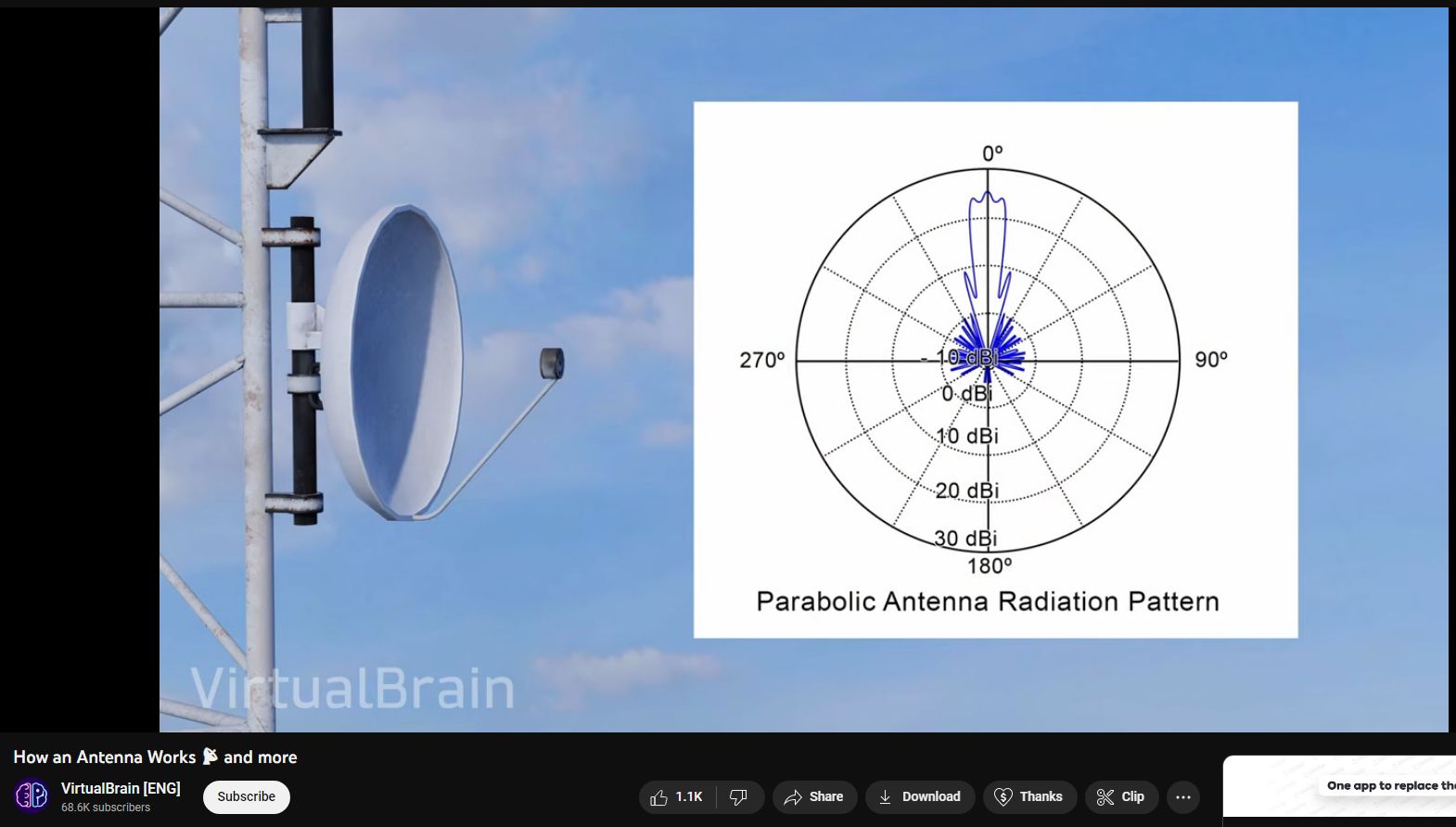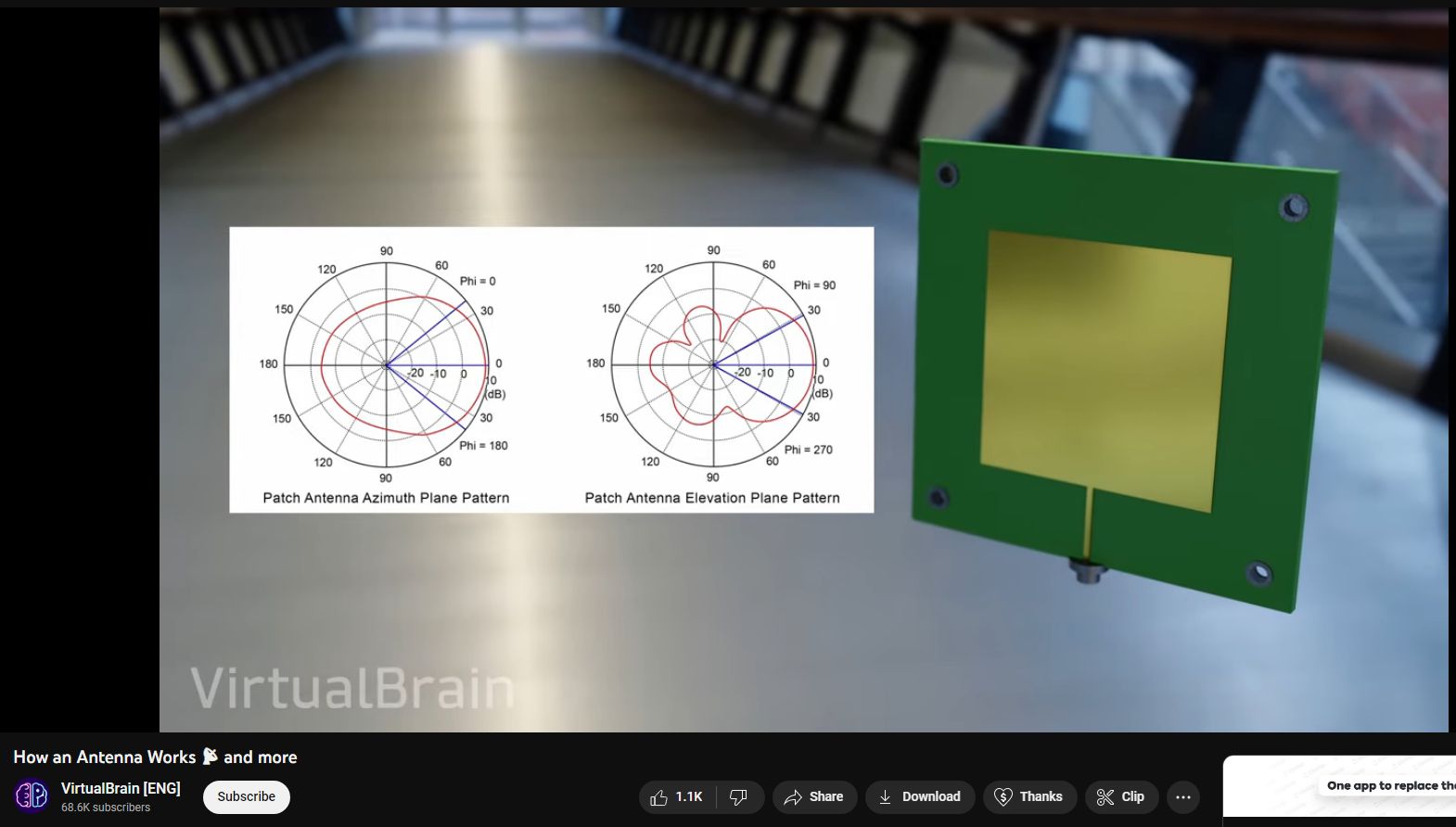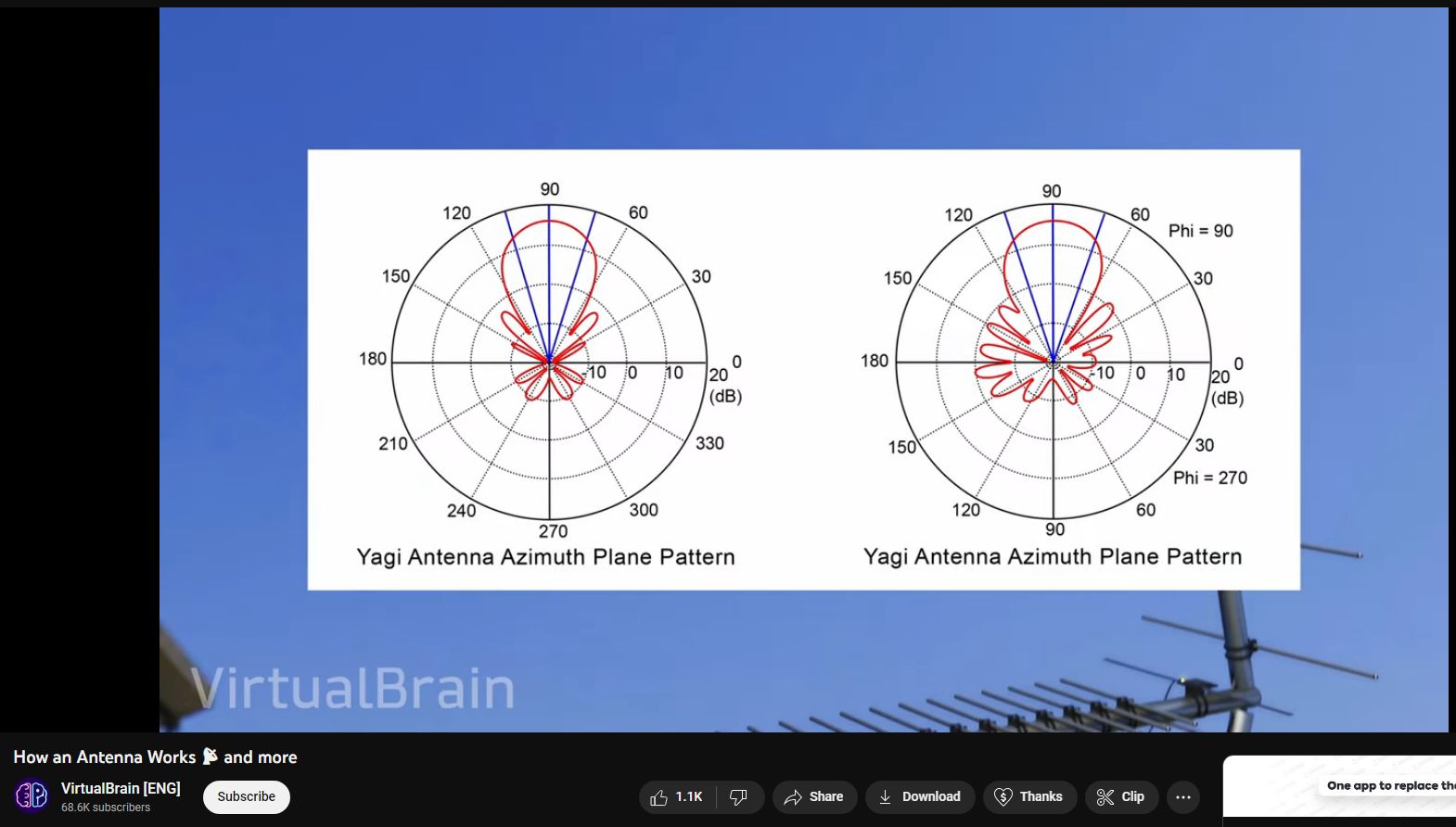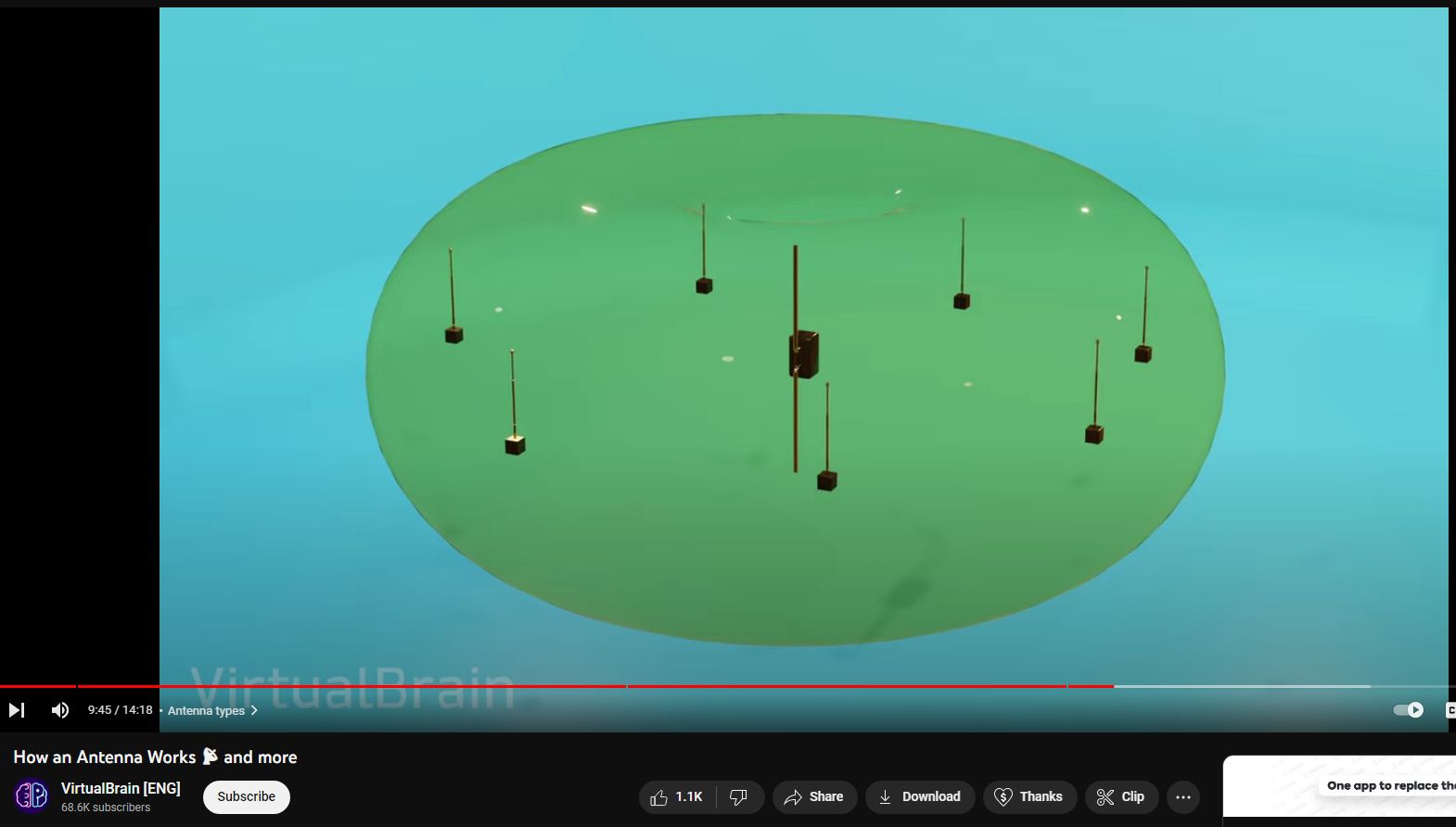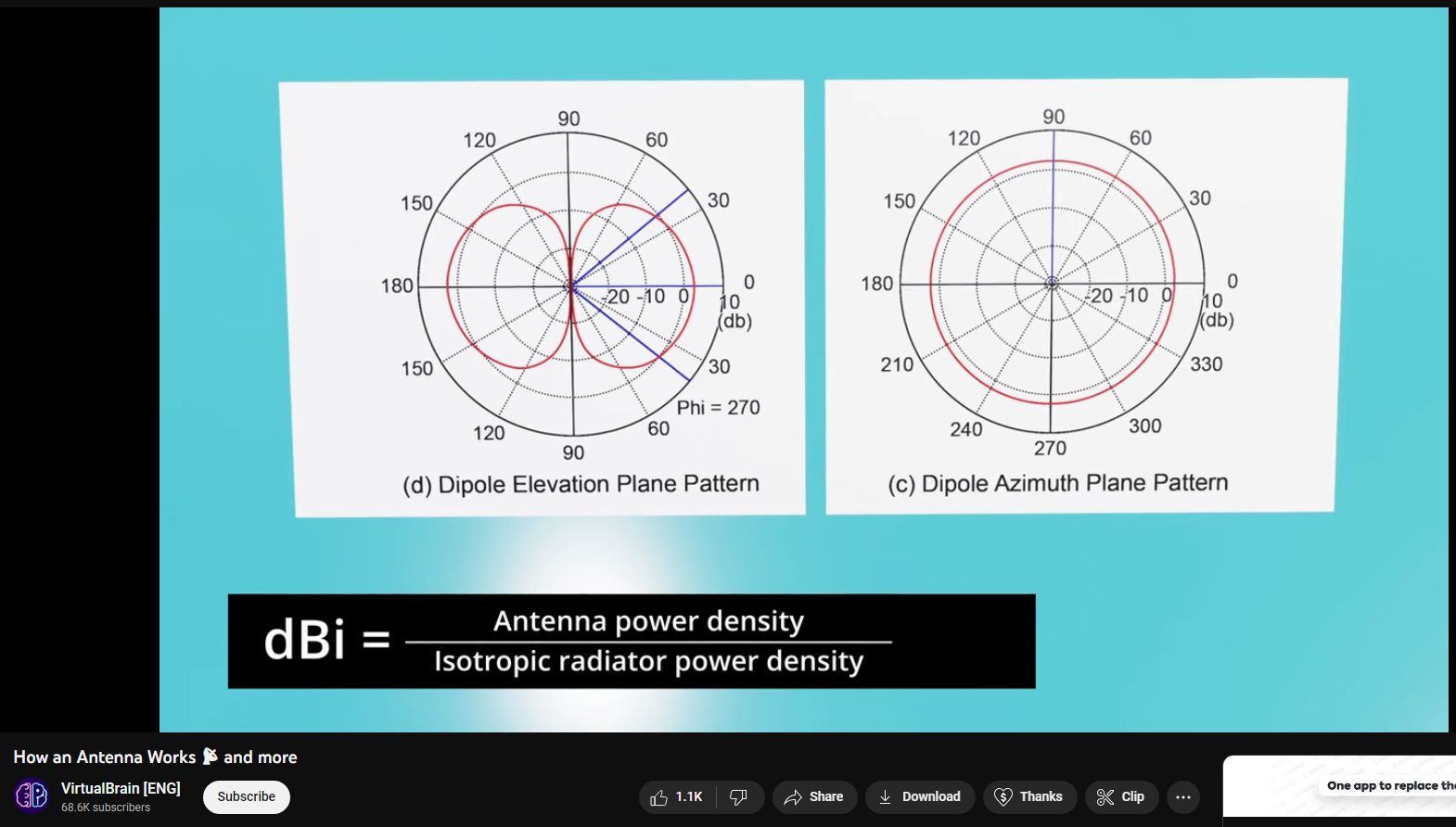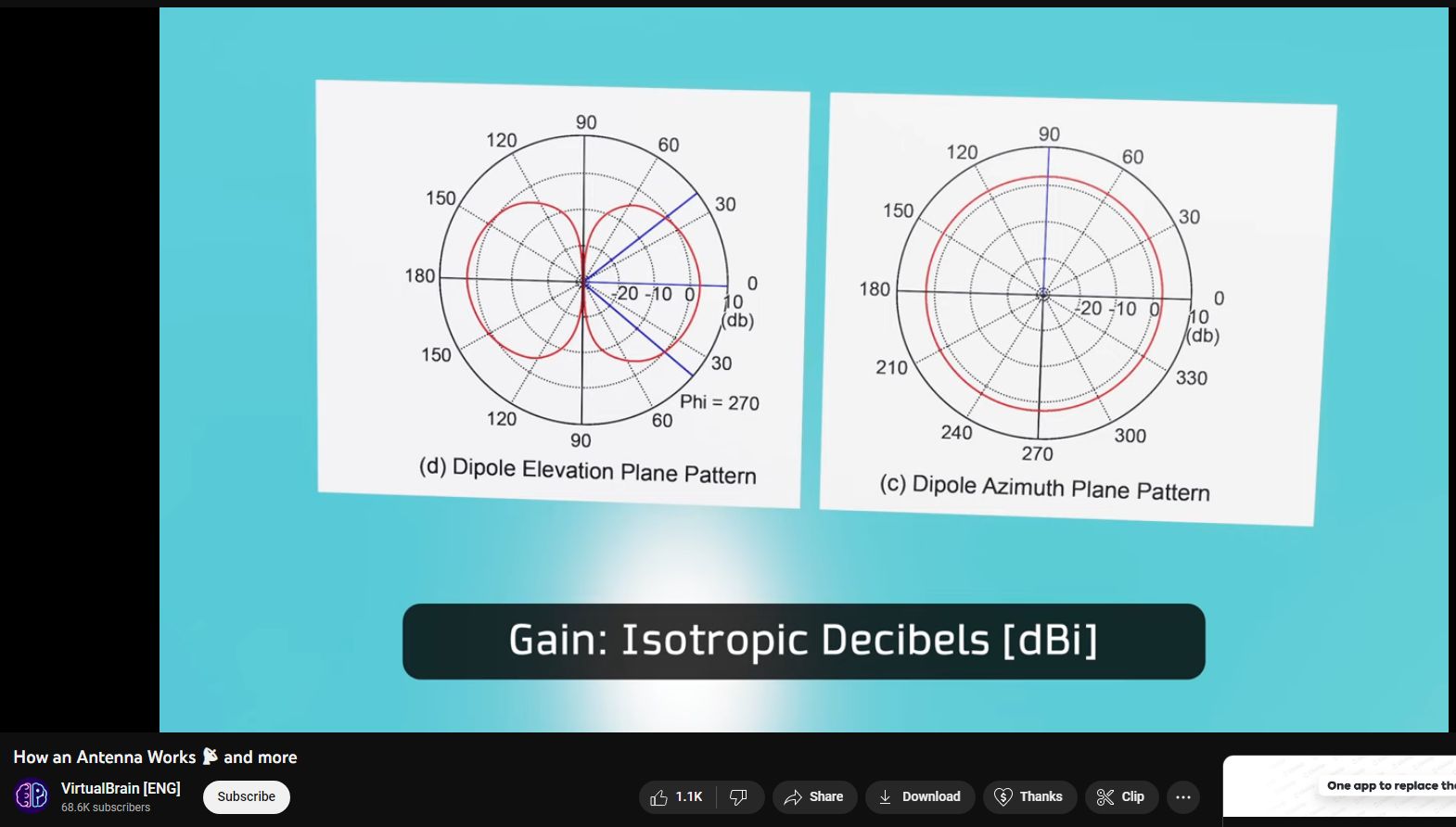Very good basic explanations, overview, animations.
https://www.youtube.com/watch?v=LmvfphxyRuo
Patch (square, half-wavelength)
Parabola
Yagi-Uda
monopole, dipole
Horn
The Yagi-Uda antenna, commonly referred to as the Yagi antenna, is a directional antenna design widely used in radio communication and broadcasting. It was invented in 1926 by Japanese engineers Hidetsugu Yagi and Shintaro Uda. The Yagi antenna is known for its simple and efficient design, making it popular for a variety of applications, including television reception, amateur radio, and wireless communication systems.
Key features of the Yagi-Uda antenna include:
1. **Directionality**: The Yagi antenna is highly directional, meaning it radiates or receives electromagnetic waves predominantly in one direction. This directional property makes it suitable for point-to-point communication and for receiving signals from a specific transmitter or station while rejecting signals from other directions.
2. **Elements**: The basic Yagi antenna consists of a driven element (active element) connected to the transmission line or receiver, along with one or more passive elements (usually straight rods or wires) arranged in a linear array. These passive elements, also known as directors and reflectors, help focus the antenna’s radiation pattern in the desired direction.
3. **Gain**: The Yagi antenna exhibits gain, which is the measure of its ability to focus or concentrate electromagnetic energy in a specific direction compared to an isotropic radiator (ideal omnidirectional antenna). By carefully designing the lengths and spacing of the elements, engineers can optimize the antenna’s gain for a given frequency band and application.
4. **Bandwidth**: Yagi antennas typically have narrow bandwidths, meaning they are designed to operate effectively within a specific frequency range. However, by adjusting the dimensions of the elements, it’s possible to tune a Yagi antenna to different frequency bands or to achieve broader bandwidths for multi-band operation.
5. **Compactness and Lightweight**: Yagi antennas are known for their compact and lightweight construction, making them suitable for portable or mobile applications. They are often used in outdoor installations, such as rooftop antennas for television reception or directional antennas for wireless networking.
Overall, the Yagi-Uda antenna is a versatile and effective antenna design with widespread applications in radio communication and broadcasting. Its simplicity, directional properties, and gain characteristics make it a popular choice for various long-range communication and reception needs.
